|

|
|
|
|
|
|
|
|
Corona Monitor |
 |
Wily was just about to have some
lunch when his phone rang. It was from a local medical equipment company.
They made kidney dialysis machines. They also made lots of the non-reusable blood
filters, which were used on their machines. The filters were rather complex
canisters of plastic sheets, all glued together. To enhance the glue adhesion, the
company ran the plastic sheets through a special machine, which bombarded the material
with a high voltage 40KV 20KHz discharge. This “corona discharge” broke up the
plastic bonds on the surface, allowing the glue to stick. |
| The company had been using their
corona machine for several years without too many problems. However, on occasion,
the machine might hiccup for a few seconds. The glitch lasted long enough to allow
sections of the filter plastic sheets to pass through the system without being properly
treated. One or more blood filter assemblies would then be completed and only later
rejected due to leaks in the filter, caused by the glitch. The company wanted a more
robust system, which would monitor the corona and stop the take-up rollers for the plastic
sheets, whenever a glitch occurred. The operator could then correct the problem,
pull the plastic sheets back a few feet, and start up again. Could Wily come up with
something? |
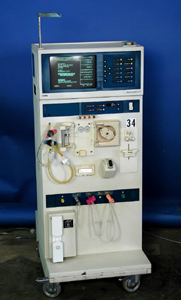 |
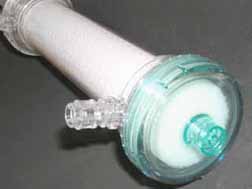 |
| Dialysis
Machine |
Dialysis Filter |
| |
|
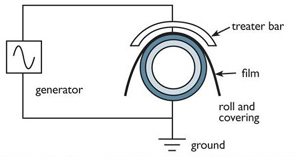 |
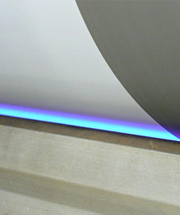 |
| Corona Treatment System |
Corona Light |
| |
|
 |
|
| The
company had been using their corona machine for several years without too many problems.
However, on occasion, the machine might hiccup for a few seconds. The glitch lasted
long enough to allow sections of the filter plastic sheets to pass through the system
without being properly treated. One or more blood filter assemblies would then be
completed and only later rejected due to leaks in the filter, caused by the glitch. The
company wanted a more robust system, which would monitor the corona and stop the take-up
rollers for the plastic sheets, whenever a glitch occurred. The operator could then
correct the problem, pull the plastic sheets back a few feet, and start up again. Could
Wily come up with something? |
|
The medical company explained that they
wanted Wily to design for them a corona detection system, which would tie into their
computer. Their computer controlled the whole corona treatment process. They already
had an audible alarm generator and a big emergency stop button. That button also
acted as a rest button, when pulled. All they needed from Wily was a logic signal
that would swing low when no corona was detected. |
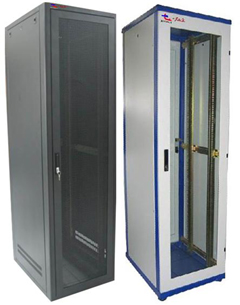 |
Wily scheduled a visit to
the company’s production line the next day. He took with him some light
measurement equipment and a camera, to capture some images of the corona machine in
operation. When Wily was shown the system in operation he immediately noticed
that the corona discharge produced a very bright violet light. The light was a
mixture of visible blue and invisible ultraviolet light. He took some quick
light output measurements with the corona on and off, using a bare silicon
photodiode, connected to a multimeter. Based on those quick tests, Wily
decided that detecting the visible and the invisible ultraviolet light produced by
the corona would be the way to go. Wily collected some physical data from the corona
treatment machine and then went back to his lab and started the designing process. |
| In addition to light, Wily
was told that the corona discharge produced a large amount of broadband radio
frequency noise. This electrical noise could interfere with any sensitive electronic
circuit placed nearby. In fact, to prevent RF interference problems, the
medical company had placed all the control corona system electronics inside large
vertical metal racks, which were positioned on either side of the corona treatment
station. The steel racks shielded the electronics inside from the electrical noise.
Wily decided that the light sensor and associated electronics should also be housed
inside one of those equipment racks, which was about 6 feet away from the corona.
He saw a good spot for his corona monitoring box, just above one of the system’s DC
power supplies, on an empty rack shelf. |
| 19 Inch
Equipment Racks |
|
|
To collect the light from the corona, Wily
decided to use an optical fiber bundle about 10 feet long and about 0.40 inches in
diameter. The 0.2 inch bundle inside was made of many tiny strands of optical fibers. The
bundle assembly was held inside a plastic jacket. Wily carefully removed the jacket
from a section of the bundle. He then slid it into the center barrel of a coax type
connector and glued the bundle in place with an optical grade epoxy. That connector
would later be used to shine the collected light onto a photodiode, to measure the light
intensity. The connector would make it easier to service the system, if needed.
On the light collection end, he removed a small section of the plastic jacket and covered
the bundle with more optical grade epoxy. Once the epoxy cured, using various
sandpaper grits, he then polished both ends of the bundle, to a smooth finish. This
treatment improved the light collection and coupling. |
|
The medical company fabricated a custom
plastic holder for the fiber bundle and installed it onto part of the corona bar.
The bundle was positioned so it pointed down toward the corona to within a half inch of
the discharge. The fiber bundle would then collect the light emitted by the discharge and
send it to the other end of the bundle. |
|
Wily carefully positioned the photodiode
inside the corona monitor’s metal box so when the fiber bundle connector was installed
onto the box’s matching connector receptacle the fiber bundle end lined up with the center
of a bare silicon PIN photodiode. Wily chose a photodiode about 0.5cm x 0.5cm in
size. As shown below, the photodiode had a response curve, which included
ultraviolet light. |
 |
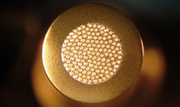 |
| Corona Light |
Optical Fiber Bundle |
|
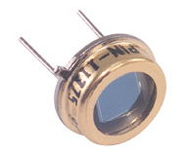 |
 |
Silicon PIN Photodiode
|
Photodiode Response
Curve
|
|
|
Wily’s light corona monitoring and alarm
circuit was pretty simple. The circuit was powered by +5v and had an on-board
voltage regulator as a reference voltage. The current from a reversed biased
photodiode was converted into a voltage using an op Amp circuit. That output voltage
was fed to a voltage comparator circuit. Wily included an adjustment in the current
to voltage converter, so he could calibrate the circuit, once it was installed on the
corona treatment machine. He would set the gain of the circuit so it would produce a
one volt output signal for a typical corona discharge. The comparator’s threshold
voltage could also be adjusted, so the device would change state when the corona intensity
dropped by about 20%. The alarm output of the monitoring circuit was connected to
the company’s computer through a three pin connector. That alarm signal controlled
the treatment process. When the computer sensed the corona alarm signal, it would
shut down the system. A human operator would then back up the plastic film a few
feet and rethread it into the take-up rollers. Finally, he would press the reset
button, which told the computer to start up the film treating process again.
|
| |
 |
|
|
|